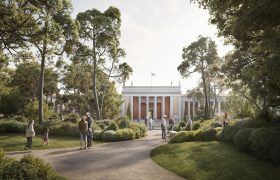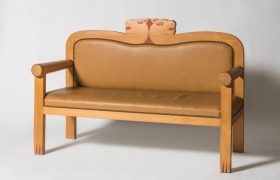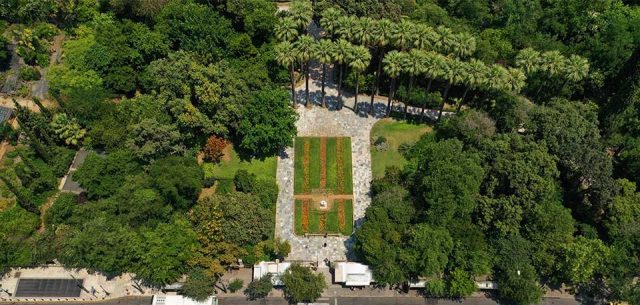A jewel in Piraeus
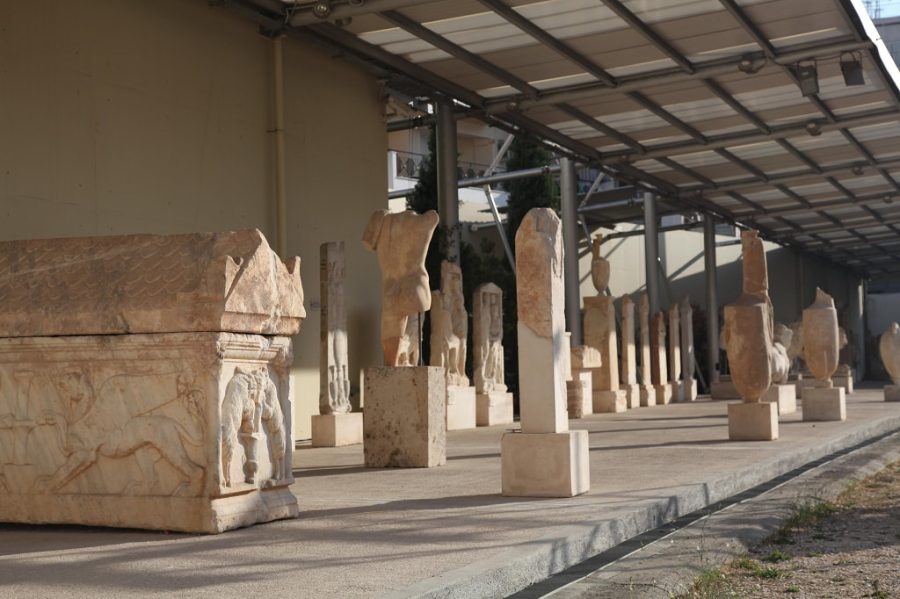
Nicholas Pissaris is dazzled by the treasures in the port city’s oft-overlooked Archaeological Museum.
Most visitors know Piraeus as a kind of chaotic cattle chute, a narrow gateway through which they are herded on their way to the Greek islands. They pass through oblivious to the wealth which has for aeons lain beneath this port city. Yet Piraeus, “like the toad, ugly and venomous, wears yet a precious jewel in his head” (As You Like It, by William Shakespeare), and that precious jewel is the Archeological Museum of Piraeus.
After three years of renovation, the museum reopened in 2008. Well-lit and airy, it now does justice to its treasures, which include finds from Aegina, the Methana peninsula and even distant Kythera, all sites administered from the archeological ephorate of Piraeus.
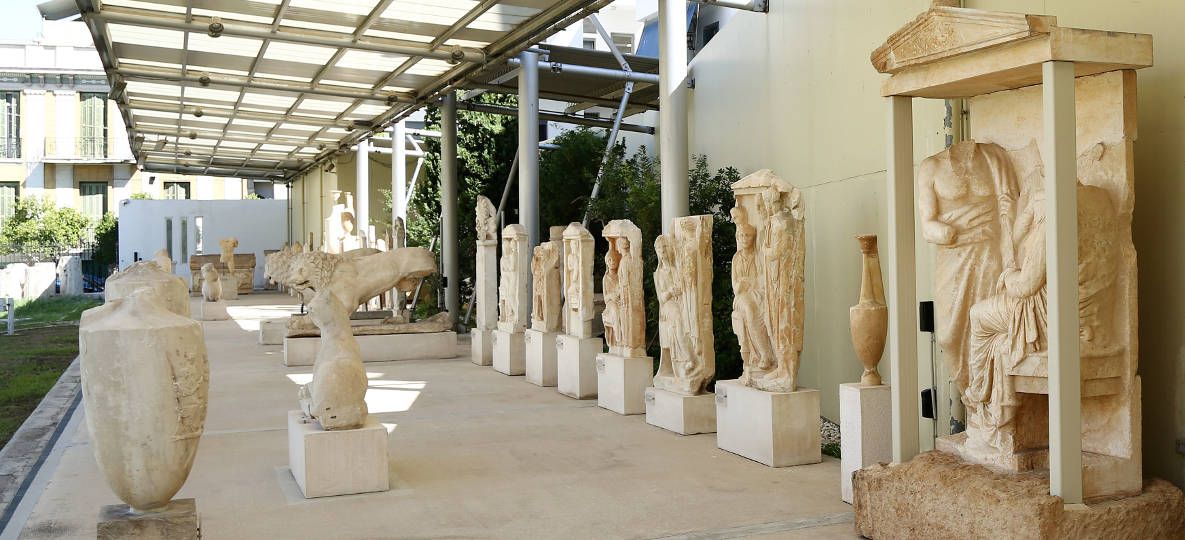 Begin your visit by viewing the large map of Piraeus in the museum’s entrance. The city came into its own when Athens decided to become a naval power at the end of the 6th Century BC. Ancient ship-sheds for triremes lined the shores of Pashalimani, the ancient Zea harbour. The fortifications, including long walls linking Athens to Piraeus, were built in the 5th Century BC after the Persian Wars; some of the fortifications remain today, while the long walls might be glimpsed in people’s basements.
Begin your visit by viewing the large map of Piraeus in the museum’s entrance. The city came into its own when Athens decided to become a naval power at the end of the 6th Century BC. Ancient ship-sheds for triremes lined the shores of Pashalimani, the ancient Zea harbour. The fortifications, including long walls linking Athens to Piraeus, were built in the 5th Century BC after the Persian Wars; some of the fortifications remain today, while the long walls might be glimpsed in people’s basements.
The museum’s showpieces are four immense bronze statues, among the most dramatic of classical antiquity, which were discovered in 1959 near the Agia Triada Church in the middle of Piraeus during sewer excavations. They were found under heavy ash (suggesting that they had been stored in a wood crate) with broken tiles above them.
The god Apollo, set on a three-step riser, dominates the room. He is 1.95 metres tall with one foot forward and the head slightly tilted. The arms, head and genitals were cast separately and then joined to the body. The style is archaic, approximately 520 BC, although the eyes, cast with the face rather than inset, suggest a later date.
The adjoining room contains the stunning bronze statues of Athena, measuring 2.35 metres tall and two of Artemis, measuring 1.94 and 1.55 metres.
Since their discovery, these unusual statues, together with a bronze tragic mask and two marble herms, have been a mystery. What circumstances led to their being collected together and their internment? Were they going to be whisked away to Rome as spoils of war, or were they hidden in order to be saved? No-one knows.
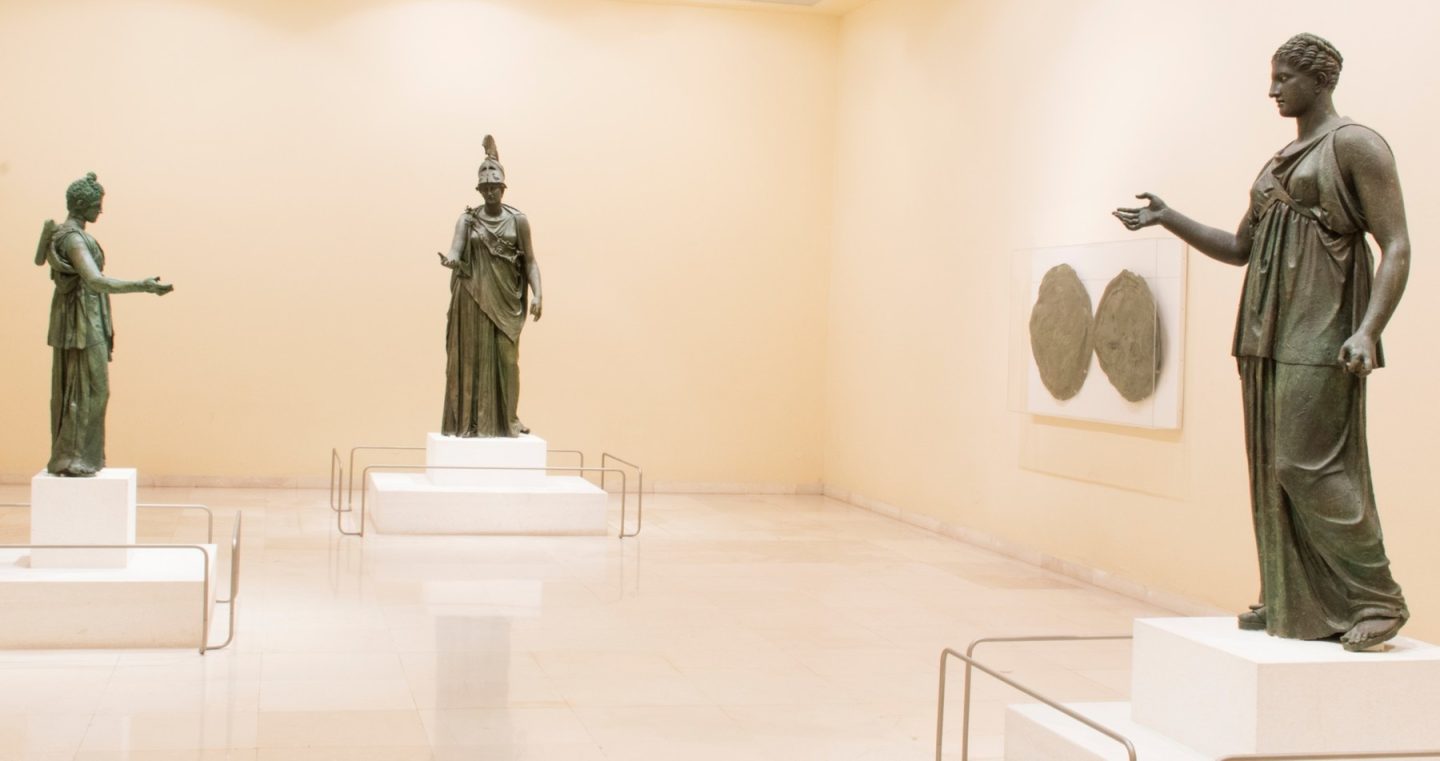 These bronze pieces may be the highlight, but there are plenty of other delights awaiting the visitor to Piraeus’ museum. These include finds from the Minoan peak sanctuary on Kythera, funerary stelae from Piraeus and other parts of Attica, sculptures from the Temple of Kyvele and finds from the sanctuary of Asklepios. In addition, there are some Roman period sculptures which were dredged up from the Piraeus harbour in the 1930s; these are academic in style, but are important because they reproduce at a scale of one to one groups of figures (Greeks and Amazons) on the outside of the gold and ivory shield of Athena Parthenos by Phidias. It is thanks to these Roman sculptures that the original a xxxx can be reconstructed in some detail with some confidence.
These bronze pieces may be the highlight, but there are plenty of other delights awaiting the visitor to Piraeus’ museum. These include finds from the Minoan peak sanctuary on Kythera, funerary stelae from Piraeus and other parts of Attica, sculptures from the Temple of Kyvele and finds from the sanctuary of Asklepios. In addition, there are some Roman period sculptures which were dredged up from the Piraeus harbour in the 1930s; these are academic in style, but are important because they reproduce at a scale of one to one groups of figures (Greeks and Amazons) on the outside of the gold and ivory shield of Athena Parthenos by Phidias. It is thanks to these Roman sculptures that the original a xxxx can be reconstructed in some detail with some confidence.
The earliest finds are located on the first floor. A Plexiglas showcase contains artefacts from a Minoan settlement on the island of Kythera, which was the first Minoan outpost outside Crete, a stepping stone to the southern Peloponnese. The items include classic examples from a Minoan peak sanctuary. In another room, there are examples of Mycenaean pottery from Salamis (dated 1300–1150BC). Note a post-Mycenaean burial amphora with a warrior’s sword bent around the handles of the vase. The rare terracotta pieces of pottery in the forms of animals and men on horses and were used as offerings to the gods. The rendering in bronze of Zeus’ thunderbolt could be part of a contemporary art museum’s sculpture collection.
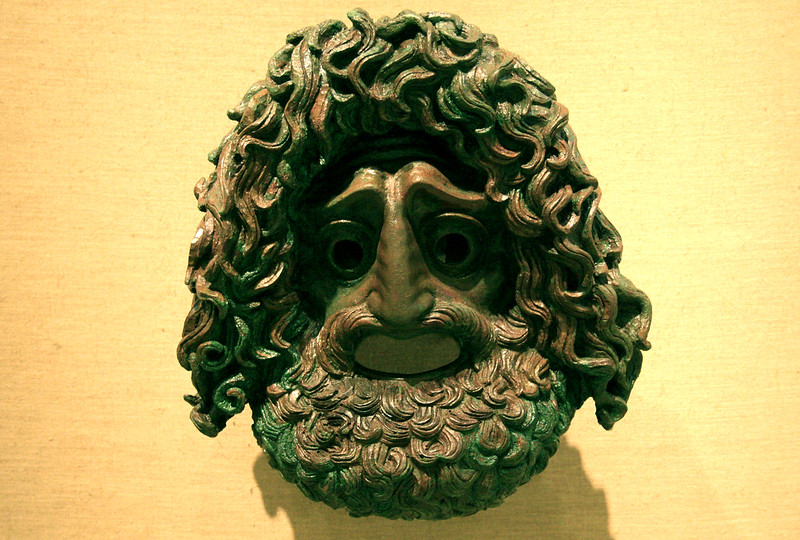 Other rooms house marble statues which, stylistically, come from Samos (6th Century BC) and were found in garbage dumps just a few decades ago. A statue of Artemis of Kinfras (4th Century BC), meanwhile, was discovered near the train station of Moschato.
Other rooms house marble statues which, stylistically, come from Samos (6th Century BC) and were found in garbage dumps just a few decades ago. A statue of Artemis of Kinfras (4th Century BC), meanwhile, was discovered near the train station of Moschato.
Funerary monuments on the ground floor include a large marble urn, the shrine of one of Socrates’ pupils, found in Kallithea. These marble tributes date before 315BC when the philosophical autocrat, Demetrios of Faliron, banned grand funerary monuments as a luxury no longer to be afforded; this tradition did not restart until a few centuries later.
Why should you visit this museum when Athens has so many? Because you are being initiated into a secret treasure that few people know about; the attraction is to experience the ancient bronze masterpieces up close without the hordes who flock to the National Museum.
The Piraeus Archaeological Museum is at Harilaou Trikoupi 31, tel 210 452.1598. From the Piraeus ISAP station, it is about 15-20 minutes’ walk, and it is 10 minutes from the cruise ship terminal. Open 9am to 5pm daily except Monday.




